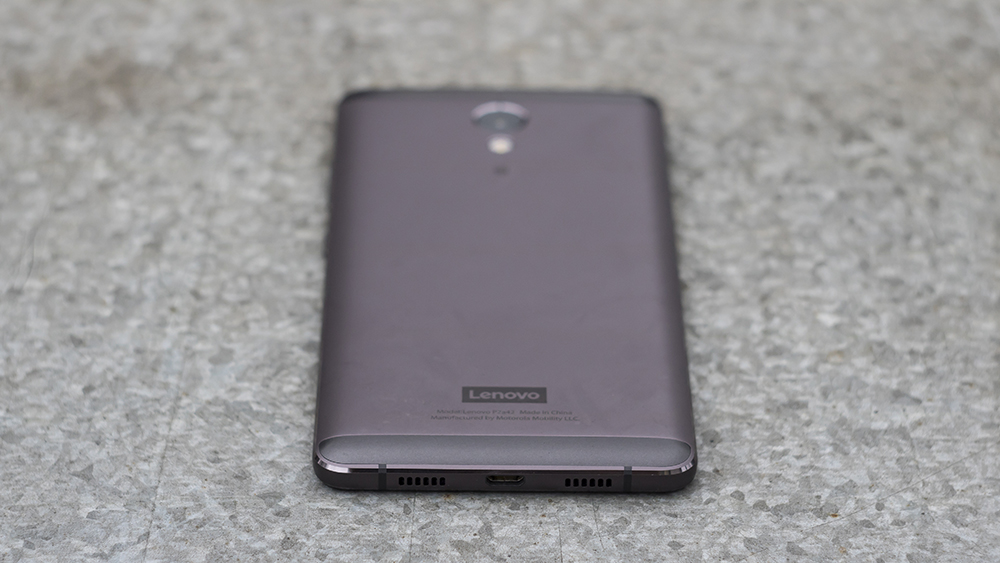Lenovo P2 review: budget brilliance with a beast of a battery
The phone that keeps going, and going, and going...
An astonishing three-day battery life would be enough to carry the Lenovo P2 on its own, but the fact that it’s got performance to back it up as well earns it a spot as one of the best smartphones of 2017.
-
+
Record-shattering battery life; Decent performance; Great value
-
-
Disappointing camera; Uninspiring design

The Lenovo P2 is the latest device in the Chinese manufacturer's line of affordable, own-brand smartphones. It's tempting to write the P2 off as another unremarkable, cookie-cutter budget device, but you'd be doing it a major disservice - it's actually one of the most interesting phones of the year so far...
Battery
The P2's biggest selling-point is its battery life, which is truly staggering. It racked up an unprecedented result of 28hrs 50mins in our tests, beating every other smartphone on the market by at least five hours. This held up in real-world use as well, regularly lasting for two to three days. You can even use the P2 to charge your other devices!
This is largely thanks to the whopping 5,100mAh battery Lenovo has packed into the P2, compared with the current standard of around 3,000mAh for most other phones. The P2 charges via microUSB rather than USB Type C, which is slightly disappointing, but it does include fast charging capability - although it's offered via a '24W rapid charger' rather than a universal standard like Qualcomm's QuickCharge technology. The fast charging reportedly offers 10 hours of battery life in just 15 minutes, which is frankly bananas.
One otherwise-useful feature that's rendered slightly redundant by the P2's stonking longevity is a physical switch on the side of the device, which flips the phone into 'Ultimate Power Saver' mode. This mode disables all but a handful of essential apps and converts the phone to a simpler, more power-efficient colour scheme.
Manufacturers like Sony and HTC commonly include features similar like this, but the advantage of Lenovo's version is that it can be turned on and off on the fly, whereas most others require the phone to be rebooted in order to activate it. On any other phone this would likely be a standout feature, but with a default battery life this good, it'll probably only be used in the rarest and most dire of circumstances. In fact, from a full charge this mode promises more than 100 hours of battery life.
Design
Weighing in at 177g with a 8.3mm thickness, the P2 is slightly thicker and heavier than most other devices, but that's to be expected given the mammoth battery it's packing. It also doesn't feel overly chunky or unweildy - while it feels noticeably more substantial than flagships like the Galaxy S7 or OnePlus 3T, the increased size and weight lends it an oddly pleasing sense of sturdiness and solidity. Usability isn't sacrificed, and it felt nice in the hand.
That aside, it's an attractive enough device, with nicely chamfered edges and a matte finish to the metal unibody, which is available in gold or charcoal colours. It's not particularly eye-catching, but it's also not overly garish.
Sign up today and you will receive a free copy of our Future Focus 2025 report - the leading guidance on AI, cybersecurity and other IT challenges as per 700+ senior executives

The P2 features a physical home button that doubles as a fingerprint reader. However, where most physical home buttons are flanked by capacitive 'recent apps' and 'back' buttons, the P2s is not. Instead, there's a slightly odd marriage of a physical home button with an additional software-based navigation bar, which makes the physical button feel somewhat redundant.
This made a lot more sense once we discovered an option buried in the settings menu that enabled iPhone-style one-button navigation. This lets users tap to go back of long-press to view recent apps. It takes a little while to get used to, particularly if you're used to standard Android navigation, but it's usable enough once you get used to it.
Display and performance
The P2's 5.5in display is as good as can be reasonably expected from a budget device - it uses an AMOLED Full HD panel, which means that its contrast is effectively perfect, and colour accuracy is virtually flawless. The one negative point is a fairly low maximum brightness, but it's certainly not a dealbreaker.
Similarly, the P2's performance is much better than we were expecting. Its 4GB RAM allocation and 2GHz Snapdragon 625 CPU handily bested both the Moto G4 and the Honor 6X in Geekbench's single-core tests and came in just under the 6X in the multi-core benchmarks.
Elsewhere, there's 32GB of internal storage with the option to expand it via MicroSD card, up to a limit of 128GB.
Camera and features
The P2's camera is somewhat disappointing - particularly given the strong competition it faces in this area from the Moto G4. Indoor photography is a particular low point, with grain and noise a definite presence.
On the bright side, Lenovo has included some interesting and potentially very useful features. One such feature is the 'dual apps' capability, which allows you to run two separate, totally siloed instances of the same software. For example, by combining this with the P2's dual-SIM support, users can run two separate WhatsApp accounts from the same phone.
Verdict
If the Lenovo P2 had nothing to recommend it but a three-day battery life, that would probably be enough to earn it a recommendation. The fact that it backs this up with a capable screen, nippy performance and some interesting features means it gets a ringing endorsement.
What's more, at 200, the Lenovo P2 is also phenomenally good value. It may not be flashy or eye-catching, but if you want a reliable workhorse of a device that will keep going through thick and thin, you're not going to get much better than this.
Verdict
An astonishing three-day battery life would be enough to carry the Lenovo P2 on its own, but the fact that it’s got performance to back it up as well earns it a spot as one of the best smartphones of 2017.
| CPU | 2GHz Qualcomm Snapdragon 625 |
| RAM | 4GB |
| Display | 5.5in 1080p AMOLED screen |
| Storage | 32GB |
| Battery | 5,100mAh |
Adam Shepherd has been a technology journalist since 2015, covering everything from cloud storage and security, to smartphones and servers. Over the course of his career, he’s seen the spread of 5G, the growing ubiquity of wireless devices, and the start of the connected revolution. He’s also been to more trade shows and technology conferences than he cares to count.
Adam is an avid follower of the latest hardware innovations, and he is never happier than when tinkering with complex network configurations, or exploring a new Linux distro. He was also previously a co-host on the ITPro Podcast, where he was often found ranting about his love of strange gadgets, his disdain for Windows Mobile, and everything in between.
You can find Adam tweeting about enterprise technology (or more often bad jokes) @AdamShepherUK.
-
 UK government confirms October cyber breach: Everything we know so far
UK government confirms October cyber breach: Everything we know so farNews Details around Foreign Office hack remain sparse and government says it's unclear who is behind the attack
By Nicole Kobie Published
-
 Data center investment reached a record $61 billion this year
Data center investment reached a record $61 billion this yearNews Hyperscaler expansion, private equity interest, and a surge in debt financing are behind skyrocketing investment levels
By Emma Woollacott Published
-
 atNorth bolsters leadership bench with double appointment
atNorth bolsters leadership bench with double appointmentNews Tatu Tuominen has been named director of public affairs and communications, while Anne Helenius-Heir will serve as director of HSE
By Daniel Todd Published
